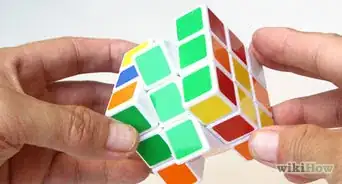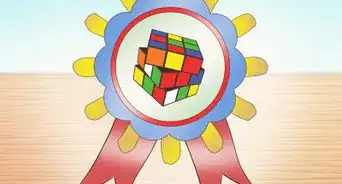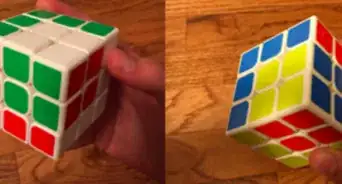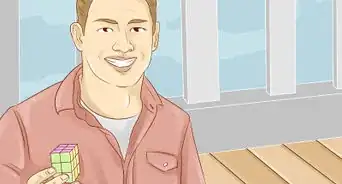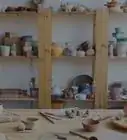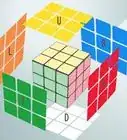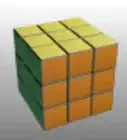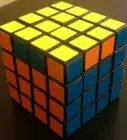This article was co-authored by wikiHow staff writer, Madeleine Flamiano. Madeleine Flamiano is an Editing Fellow at wikiHow based in Berkeley, California, as well as a Team Organizer, Copy Editor, and Movie Critic for Incluvie. Madeleine has 12 years of experience in literacy advocacy and the creative arts that span tutoring, teaching, writing, public relations, and non-profit support. She has penned seven novels under a pseudonym and loves all escapist genres, from cozy fantasies to hard-boiled sci-fi. Her professional path started at NaNoWriMo, where she scripted and hosted a series on worldbuilding. Madeleine graduated from Mills College with a B.A. in English with a concentration in Literature and a Minor in Philosophy.
This article has been viewed 131,990 times.
Learn more...
If you’re new to Rubik’s puzzles, the 2x2 Rubik’s Cube is a great starting point. All you need are some simple algorithms to master the two-layered "Pocket Cube" or "Mini Cube." Here, we’ll explain what the algorithm notations mean, then walk you through how to use those algorithms to solve the beginner-friendly 2x2 Rubik's Cube. Read on to try out this fun puzzle, learn the basics of Rubik's cubes, and impress your friends.
Steps
Solving the White Layer
-
1Use (U), (U’), or (U2) to move 3 white pieces to the bottom face. Start by finding a face that already has at least 1 white piece. Then, try 1 of these 3 algorithms until you create a bottom face with 3 white pieces.
-
2Use (R U' R') or (R U R') to place a white piece above the bottom face. If a white piece isn’t already on one of the faces on the top layer of the cube, try (R U' R') or (R U R'). One of these algorithms will move a white piece to the upper corner of one of the faces.[2]
-
3Perform the (R U R’), (U R U’ R), and (U R2 U’R2) algorithms. These 3 algorithms rotate all the white pieces. Repeat the sequence until the bottom face of the 2x2 Rubik’s cube has 4 white pieces.
- (R U R')
Moves 1 white piece from the top row of the right face down to the bottom face. - (U R U' R)
Moves 1 white piece from the top row of the face across from you down to the bottom face. - (U R2 U'R2)
Moves 1 white piece from the bottom row of the topmost face all the way down to the bottom face.
- (R U R')
Solving the Yellow Layer
-
1View your 2x2 Rubik’s Cube from the top. Orient your cube so the white face you solved is at the bottom. Check for all the yellow corner pieces remaining.[3]
-
2If you only see 1 yellow corner on the top face, use 1 algorithm. Use (R U2)(R’ U’R’ U’R’) if you see 1 yellow piece in the right hand corner. If you see 1 yellow piece in the lower left hand corner, use (R U R’U)(R U2 R’).
-
3If you see 0 yellow pieces or more than 1 yellow piece on the top face: Select 1 of 5 algorithms. Choose only one algorithm—select the right one based on the number of yellow corner pieces you see on the top face. Also check for where the other yellow pieces are on the cube. Use that specific algorithm to solve the yellow layer.
- (R U2) (R’ U’R U’R’) + (R U2) (R’ U’R U’R’)
Use if you see: 0 yellow corner pieces on the top face. 2 yellow pieces on the top row of the face across from you. 2 yellow pieces on the top row of the face right in front of you. - (R U2) (R’ U’R U’R’) + (U’) + (R U2) (R’ U’R U’R’)
Use if you see: 0 yellow corner pieces on the top face. 1 yellow piece on the top row of the face across from you. 1 yellow piece on the top row of the face in front of you. 2 yellow pieces on the top row of the left face. - (R U2) (R’ U’R U’R’) + (U’) + (R U R’U) (R U2 R’)
Use if you see: 2 yellow pieces on the top face—1 on the upper left hand corner and 1 on the lower left hand corner. 2 yellow pieces on the top row of the right face. - (R U2) (R’ U’R U’R’) + (U) + (R U R’U) (R U2 R’)
Use if you see: 2 yellow pieces on the top face—1 on the lower left hand corner and 1 on the lower right hand corner. 1 yellow piece on the top row of the left side. 1 yellow piece on the top row of the right side. - (R U2) (R’ U’R U’R’) + (U2) + (R U R’U) (R U2 R’)
Use if you see: 2 yellow pieces on the top face—1 on the upper left hand corner and 1 on the lower right hand corner. 1 yellow piece on the top row of the face in front of you. 1 yellow piece on the top row of the right face.
- (R U2) (R’ U’R U’R’) + (R U2) (R’ U’R U’R’)
Solving the Cube
-
1Use (R’U)(L’U2)(RU’)(R’U2)(LR) on corner pieces with the same color. For example, start with 2 blue corner pieces, then move on to 2 orange corner pieces. Then, turn the cube upside down and perform (R’U)(L’U2)(RU’)(R’U2)(LR) until the cube is solved.[4]
- This is one alternative to use in order to solve the cube. After you solve the yellow side, try this method if you see a lot of corner pieces next to pieces of the same color.
-
2Use (R’U)(L’U2)(RU’)(R’U2)(LR) for corner pieces next to different colors. This will match corner pieces of the same color together. For example, perform the algorithm if an orange corner piece is right next to a red corner piece. Then, use the (R’U)(L’U2)(RU’)(R’U2)(LR) algorithm again.
- Finally, flip the cube upside down and perform (R’U)(L’U2)(RU’)(R’U2)(LR) until all the cube’s sides are solved.
- This is the other alternative for completely solving the cube. If you've already solved the yellow face and the rest of the cube's corner pieces are next to pieces that are different colors, try this method.
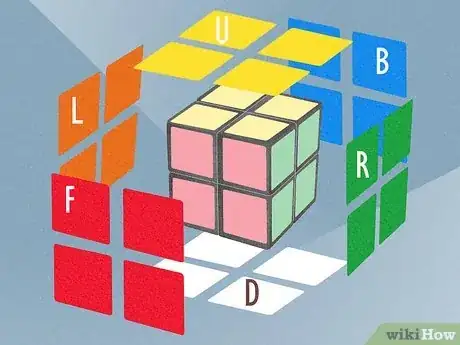
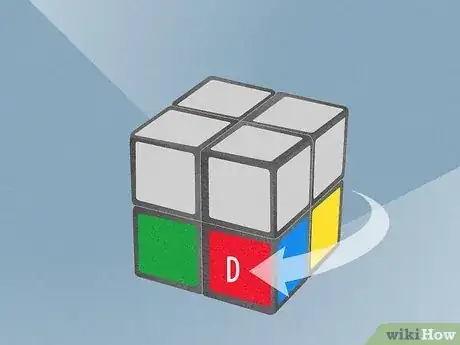
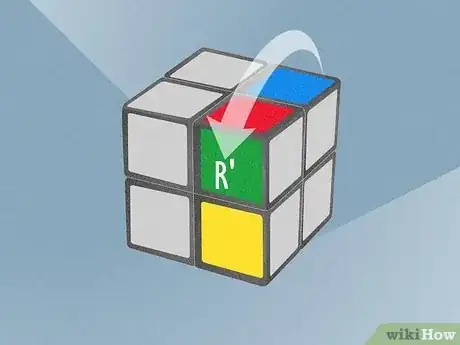
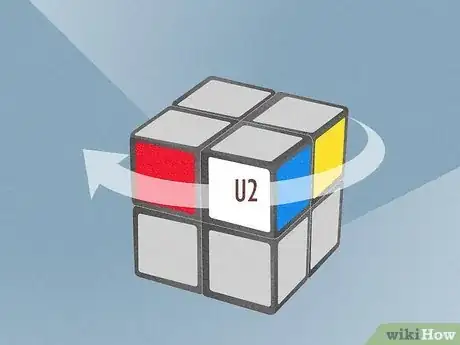
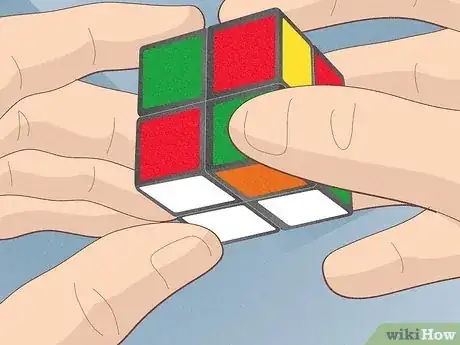
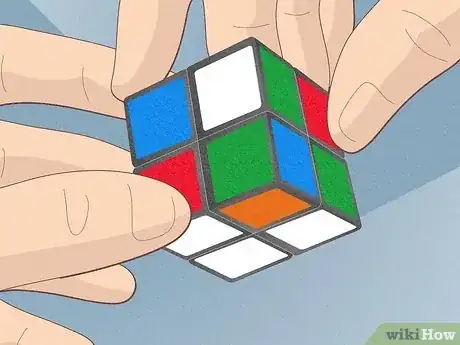
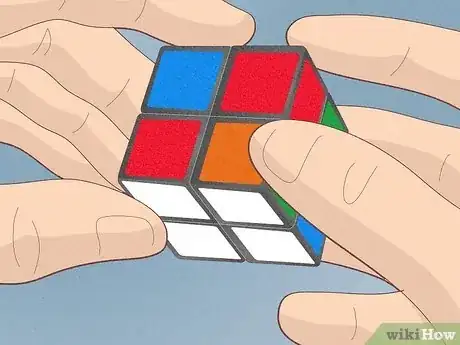
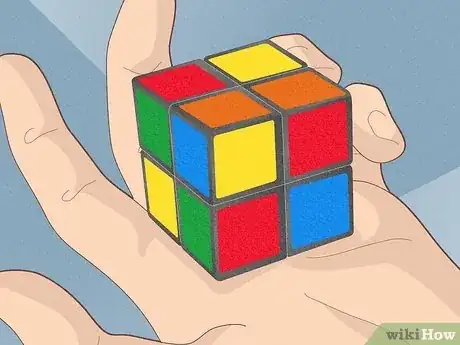
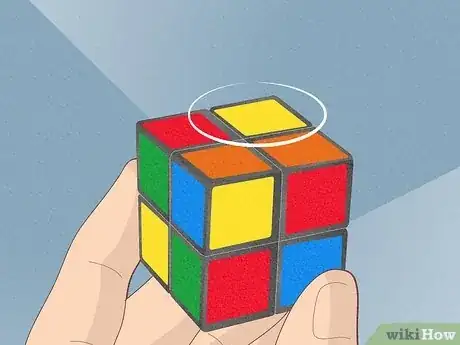
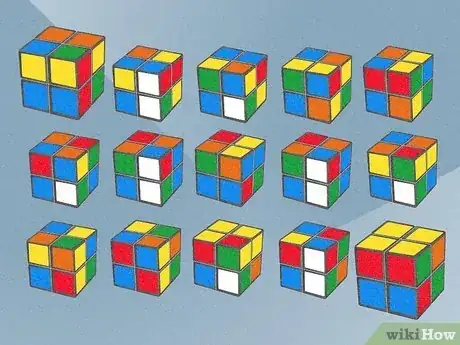
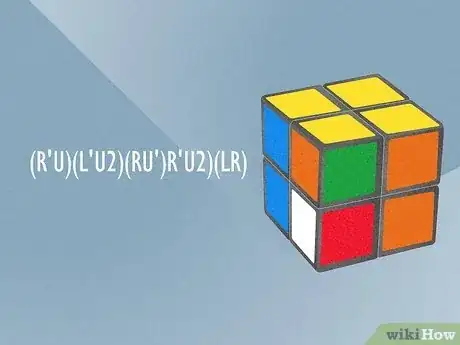
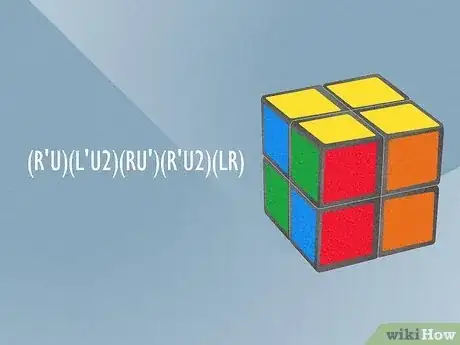
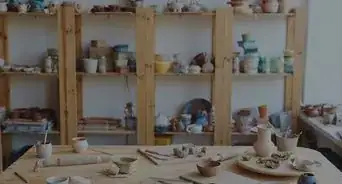
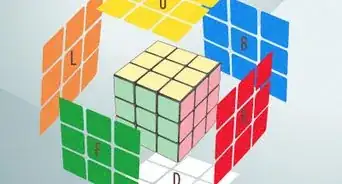
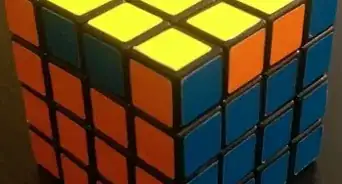

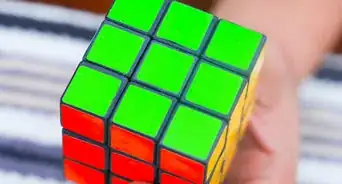
-Step-9.webp)
